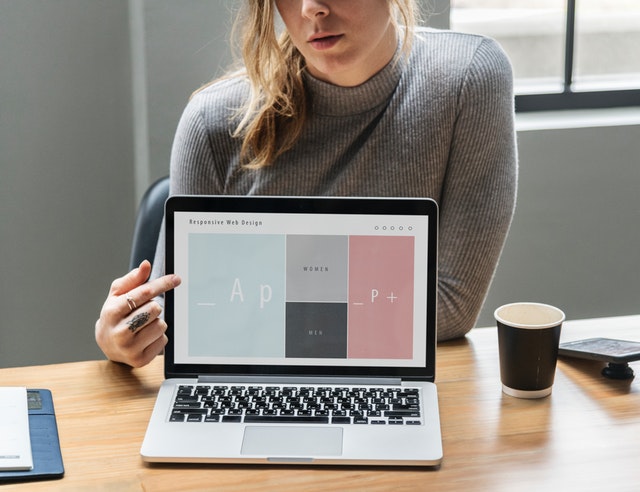

Site design is the process of defining a specific site’s structure. It involves structuring the content on a website, both for the site owner and customers, to provide clear navigation and prioritize important elements. Website designs specify the content hierarchy. Content directs people around the site, and it must effectively communicate your message to them.
To choose a profitable design, it is important to become acquainted with some basic concepts related to blog design. We have compiled a list of concepts that will help you get oriented to the wealth of predefined site designs.
Visual weight is the perceived strength of certain elements on a website. Negative space, or space devoid of any elements, pushes the focus towards elements that outweigh the rest through visual pressure focused on them.
In balanced web design, the elements that make up the design support each other so that the user sees the text content with equal importance. Additionally, the elements are easily scannable, and the design presents them effectively. The design provides a sense of balance and looks pleasing from an aesthetic perspective. Symmetrical balance is one of the most common balanced layouts, where a visual element appears the same on both sides of the center, similar to a mirror image. Symmetry evokes balance, elegance, and enjoyment.
Arrangements of elements can be altered, so that users can quickly switch to other website sections. Consider fashion sites that address both women and men. The design supports two distinct segments within the site, one dedicated to attire for men and another dedicated to attire for women. The design split provides practical content that is highly useful for both target audiences.
While some designs follow the standard route, aiming to provide the best functionality, other designs use bold structures and designs to make an impact on the user. Breaking the mold means unexpected arrangements of elements within the webpage, and the experiences it triggers stand out in a sea of conventional sites. A user cannot help but remember your site.
In website design, visual tension draws the user’s attention by focusing on key points of the site. Visual tension arises from a lot of space, color, or luminosity, and it is easily noticeable when interwoven in a proper balance of elements. Its purpose is to stimulate users to pause and process the information on the site in a fresh light.
A call-to-action button, an image, or headings can be focal points, depending on how they are integrated into the website design to become the biggest factor of attention on a website. Focal points help to engage users halfway to conversion (whatever “conversion” may be for your particular site), as users focus their attention on them and are more likely to take the actions you want them to take.
It is a best practice to define website goals before starting to look for a design or browsing through design templates. The website design should be selected based on the site objectives, as it will trigger specific user behaviors that lead to completing those goals.
Design the layout or search for a design that molds to the content you want to convey. Section placements should come together to tell a complete story, where each element in the sequence is another chapter in your narrative.